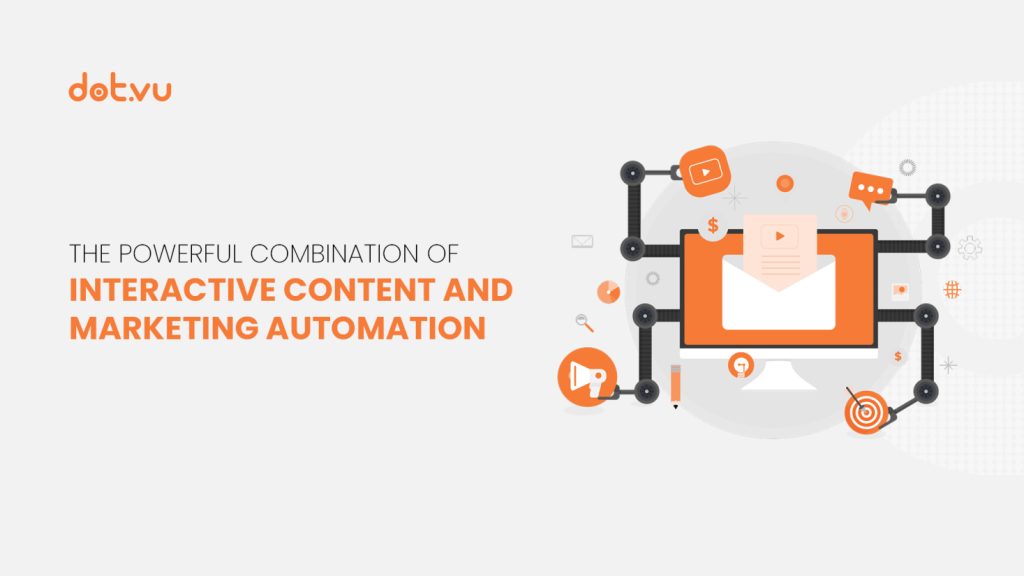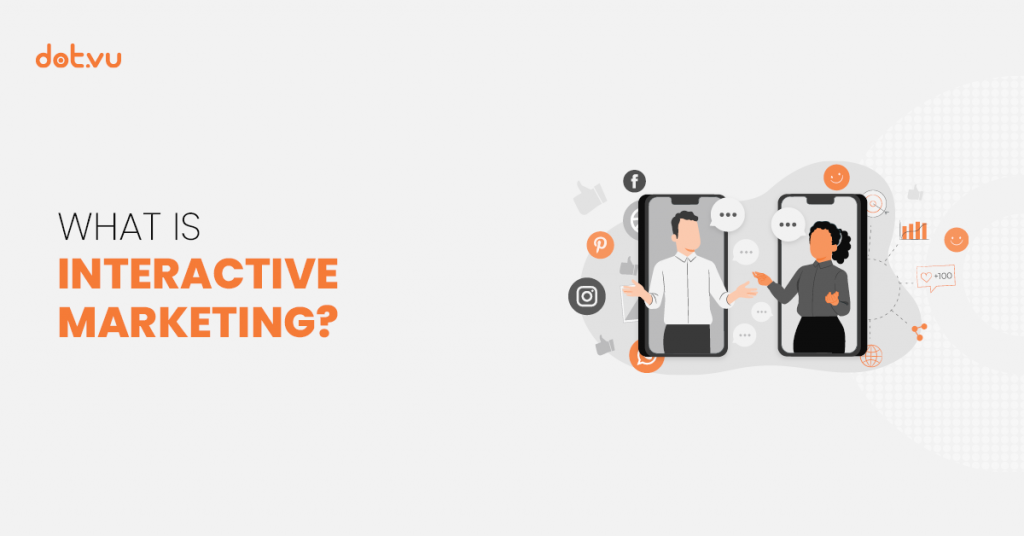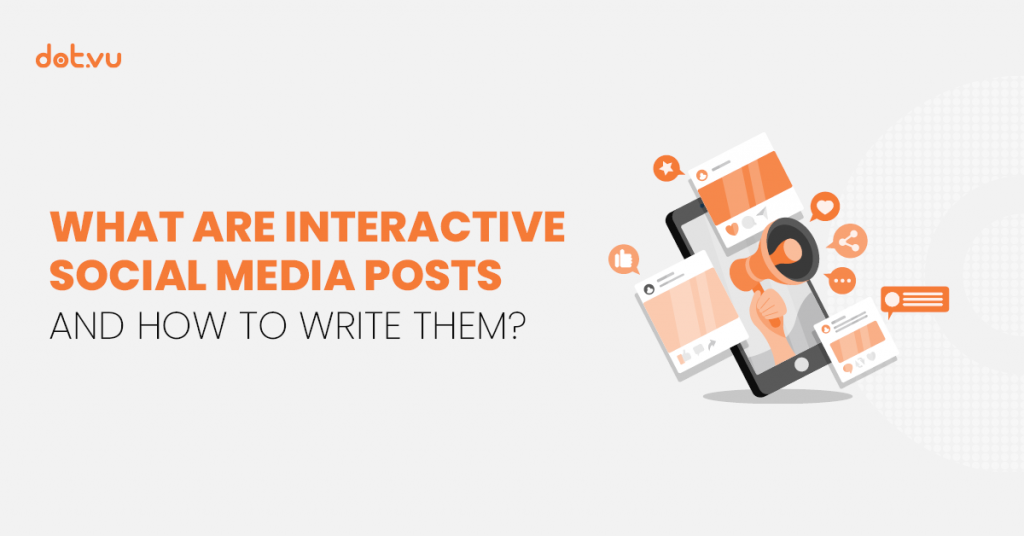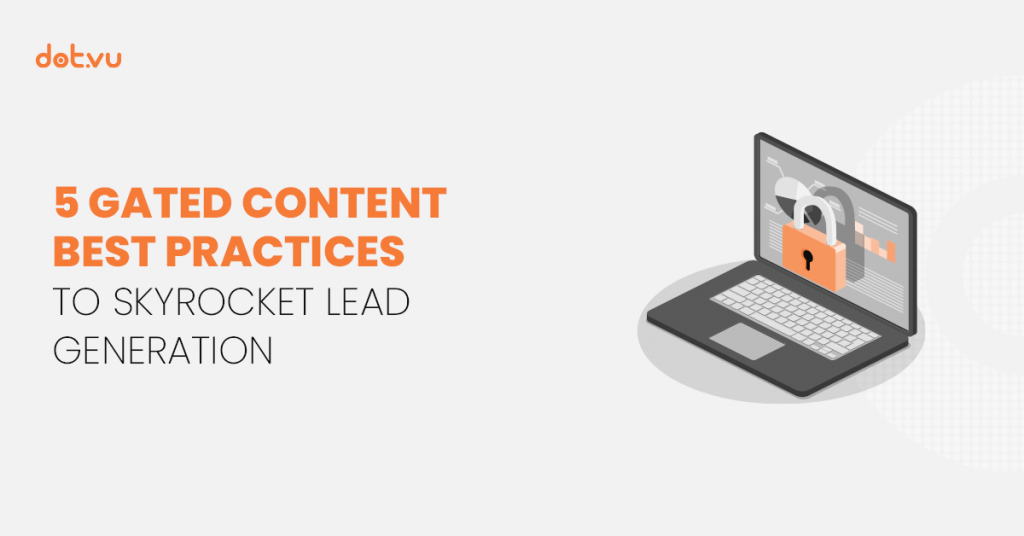
Implementing a few gated content best practices is the direct path to effective lead generation for many companies. Let us explain. Providing high-quality content is crucial both for the B2B and B2C industries. Why is that? Well, content leaders have nearly 8 times more traffic than non-leaders! The more valuable blog posts and educational videos you post on your website, the more organic traffic you attract.
Along with educating and engaging customers, a successful marketing content strategy can have other compelling benefits. If you bring value to your target audiences at every customer touchpoint, they will return. They will become loyal to your brand. They will want to read your blog posts and view your videos. Here comes your opportunity to generate leads. Gating your content will encourage your customers to exchange their information for access to your white papers, videos, or discount codes.
This blog post will show you how to get high-quality leads by gating your valuable materials. We will go through the following topics:
- What is gated content?
- Gated vs. Ungated content.
- Gated content best practices (B2B and B2C).
- Gated content examples.
So, let’s start with the gated content definition before diving into the best ways to implement this tactic.
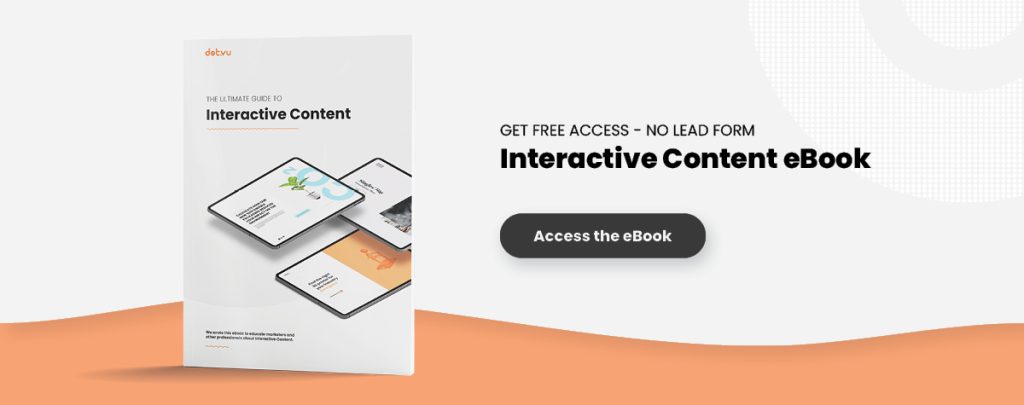
What is gated content?
Gated content is a “locked” online material that requires users to fill out a form with their email addresses and other relevant information to access it. Examples include flipbooks, eBooks, videos, and blog posts with closed sections. If your content is valuable, your customers will be willing to provide their personal information in exchange.
An astonishing 82% of marketers who aim to increase lead quantity also want to improve lead quality. Are you one of them? Then you are in the right place. The main purpose of gated content is to acquire qualified leads. We chose to highlight the term “qualified leads” because there is a big difference between passive viewers and active users of your content. The ones who fill out your forms are the ones who are fond of your online materials. Furthermore, your company collects valuable consumer data by identifying the areas of interest of your target audience.
Gated vs. Ungated content
Many marketers are torn between gated and ungated content. Let’s explore your options.
Gated content
Gated content is a proven marketing technique that works when your customers are already interested in the knowledge you offer them. If your readers are engaged with your content, they wouldn’t mind filling out a form to access a valuable piece of information. In fact, almost 50% of marketers classify online forms as their highest converting lead generation tool. The key here is to generate interest with valuable knowledge or discount codes – depending on your industry.
We encourage you to use gated content if:
- You have stable organic traffic and a solid website visitor base. If your website has a high authority, you will be able to create trusted gated content that readers will rely on.
- The free content leading to your gated material ranks high in the search engine.
- The content you want to “lock” is valuable enough for visitors to give their email addresses in exchange.
- You have a clear idea of your email strategy. Growing your email list requires you to craft a step-by-step strategy on how to use it.
Ungated content
As the name suggests, ungated content is easily accessible to your audience. It doesn’t require them to provide any information in order to view it. The most common examples are blogs and news posts. You might think that hiding content from your viewers is annoying. Why would they lose their time filling out a lead form if they could visit a competitor’s website instead? The fear of losing traffic is one of the reasons companies continue to use ungated content.
It is more reasonable to allow free access to your website in some cases. Here are a few examples:
- Organic growth is your top priority. If you want to increase your organic traffic with SEO, gating your content would be a bad idea.
- You don’t have a solid base of loyal customers. Stick to ungated content if you don’t have a solid base of loyal customers who would engage with your website actively.
- Brand awareness is your top priority. If increasing brand awareness is your top priority, you should skip gated content. Your readers might still be uncomfortable sharing their information with a company they are not familiar with.
- The competition in your field is tough. Some types of content should not be gated because there is tough competition. For instance, gating a blog post about a broad term like “How to clean my kitchen?” would send your readers directly to your competitor’s websites – there are tons of them! If your article doesn’t offer exceptional value, you will lose your traffic.
To sum up, we recommend using gated content when getting more qualified leads is your top priority. On the other hand, we advise you to stick to ungated content when you want to increase brand awareness.
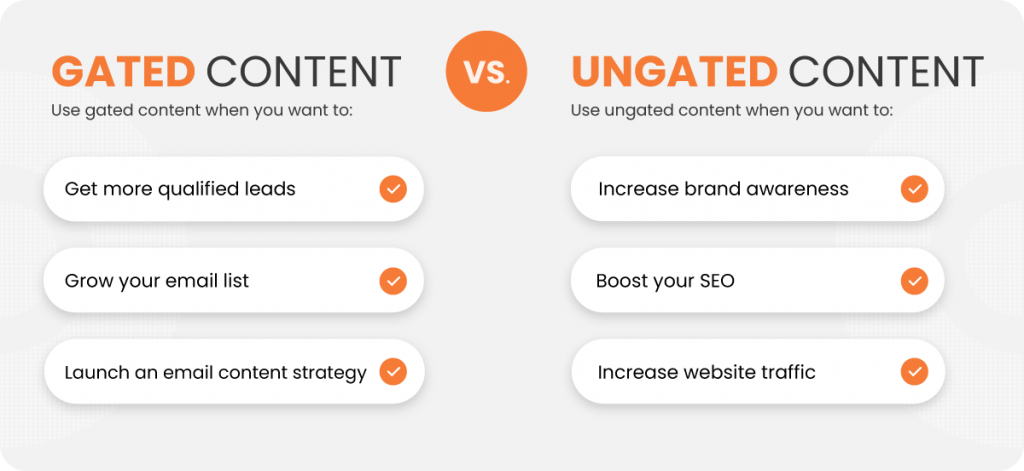
5 Gated content best practices for an effective lead generation
We enumerate 5 killer gated content tips in this section.
1. Define your target group
The significant difference between the B2B and B2C purchasing journeys requires you to consider your gated content materials carefully. The target audience you sell to has different needs, so you need to deliver the right format.
Common gated content examples for B2B include eBooks, flipbooks, industry reports, calculators, and assessments. When it comes to B2C, companies usually gate discount codes, limited offers, memberships, and videos.
The image below illustrates the most suitable gated materials for B2B and B2C.
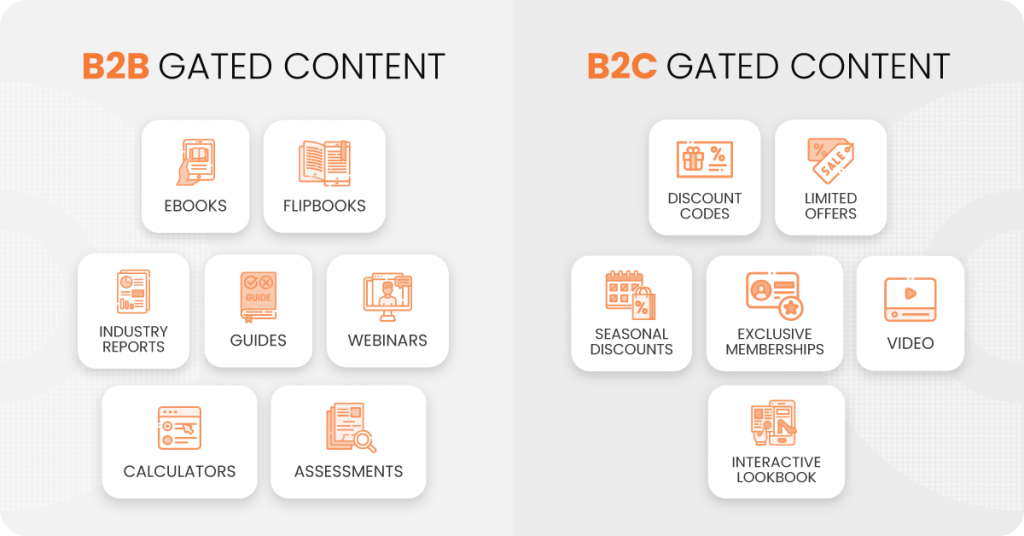
2. Identify customers’ needs
Knowing your customers well is the key to a successful content marketing strategy. Are your visitors engaged enough to give you their email address in exchange for your exclusive eBook or locked video? Do they really need the information you are about to offer them? Being aware of your customers’ needs will help you create tailored pieces of content.
You can conduct keyword research or ask your customers directly to discover the hot topics in your niche. This is an ideal way to get to know your customers better. As a result, you will be able to craft the correct content format that your audience needs.
3. Identify the right gated content format
The content you generate for each stage of the buyer’s journey differs in the level of complexity and commitment:
- The most suitable formats for the awareness stage are videos, eBooks, quizzes, and games.
- The consideration stage requires a higher level of expertise with flipbooks and calculators.
- To facilitate the purchase decision, you can use videos, assessments, and guided selling content formats in the decision stage.
4. Bring value to your audience so they open your gated content
The free content that attracts your audience must be valuable enough to awaken their curiosity. One of the ways to engage your audience actively is through Interactive Content. As the term suggests, it is all about encouraging customers to interact with your digital content. For instance, they can answer questions, play games, or flip the pages of an Interactive eBook. Interactive Content creates an excellent user experience because it makes complex or boring information easier to consume. Therefore, it is an effective way to give value to your audience. Once you have a solid base of engaged customers, you can be more confident in gating parts of your online content. Check out three Interactive eBook examples to get inspired for your gated eBooks.
An Interactive Content platform like Dot.vu can help you repurpose your old content into Interactive Content pieces. That’s the most efficient way of creating amazing content worth gating.
5. Track your performance
Measuring your results will give you a clear picture of whether your gated content strategy is successful. We recommend tracking the following metrics:
- How many people exchanged their information to access your gated content?
- How many left your website after seeing the lead form?
- What was the time spent on your page?
- What was the time spent on your gated content material?
If your KPIs fail, you need to change either the free or the gated content format. Once you have a solid email list, it is time to send those emails and start converting leads.
When it comes to your email strategy, we recommend tracking the following metrics:
- Open rate.
- Click-through rate.
- Conversion rate.
- Bounce rate.
- Revenue per email.
As a result, you will be able to measure the overall success of your newsletters.
To summarize, the gated content best practices for effective lead generation are:
- Define your target group.
- Identify customers’ needs.
- Identify the right gated content format.
- Bring value to your audience so they are willing to open your gated content.
- Track your performance.
Do you want to start gating your materials? The next section will explore four gated content examples to get you inspired.
5 Gated content examples for lead generation
You can choose to gate any type of content. However, it is crucial to follow the steps mentioned above to achieve optimal results. Now, let’s explore some common examples to get you started.
1. Interactive Flipbook with gated sections
An Interactive Flipbook can be a reliable source of information about a given industry, company, or product. It can be a particularly good Interactive Experience to consider for your Fashion Marketing campaigns. You can gate specific pages or an entire section of your flipbook to get the most qualified leads. If your content is valuable enough, your readers will commit.
Furthermore, gating sections of your flipbook will help you discover the interests of your target audience. Do people prefer to unlock a how-to-guide, or are they more interested in real-life examples? Once you know the answer, you can adapt your strategy to your audience’s needs.
You can use gated Interactive eBooks and Flipbooks for both B2B and B2C. However, if we must choose one target group, we recommend utilizing these formats for your business customers. An eBook can help you position your company as an industry leader by providing reliable, educational content.
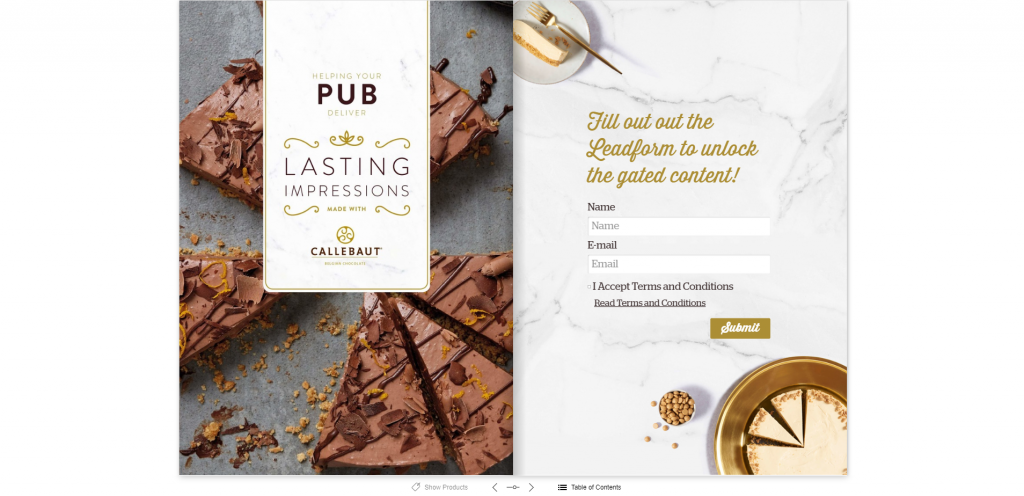
2. Marketing Games with locked prizes
Releasing an engaging Marketing Game with gated discount codes is particularly suitable for B2C. If the prize is exciting enough, your customers will be willing to provide their email addresses.
Have a look at this “Spot the difference” digital game below. Once the players find all five differences, they fill their names and email addresses out to participate in a contest for a special prize.
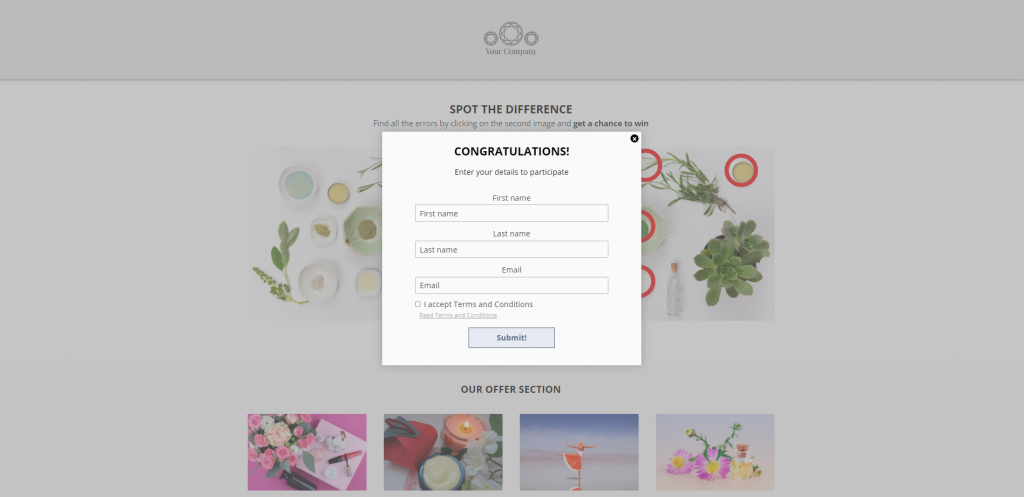
3. Gated video or Interactive Video with gated sections
Videos are a fantastic type of content when it comes to educating and entertaining your customers. It is relatively easy to keep your viewers engaged. Choose a topic they want to know more about, and you will get there. That’s why gating sections of your videos can be very effective for lead generation. The more compelling your videos are, the more viewers will exchange their personal information to unlock gated sections.
Videos are great for both B2C and B2B.
You can find an example below. A company presentation can be gated if the customer base is genuinely interested in the organization’s history, values, and visions.
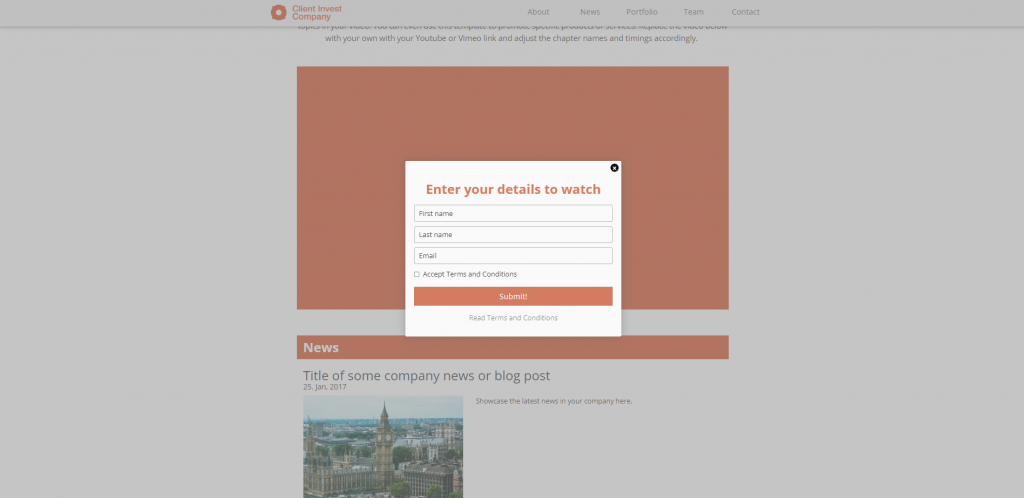
4. Assessment with gated results
Assessment is a type of content that provides your audience with valuable customer advice or service offers that match their situation. Furthermore, it is an excellent way to collect new rich lead profiles. First, you generate interest by crafting a questionnaire that will define the needs of the respondents. Next, you gate the result to grow your email list.
The leads you generate through an assessment are qualified because they arrived looking for a specific piece of advice or offer in the first place.
Assessments can be a particularly useful to add to your B2B interactive marketing strategy.
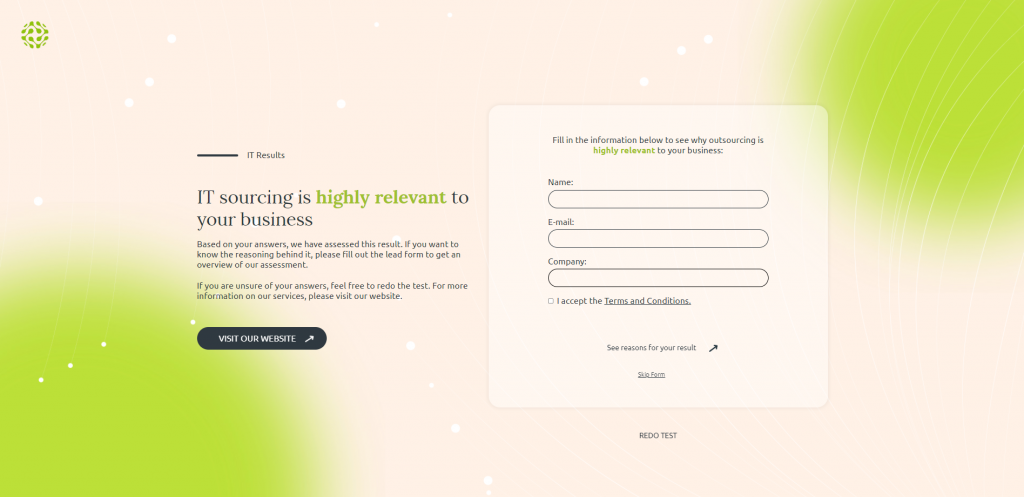
5. Quiz with gated results
Quizzes with gated results are a clever tool to engage and learn about your audience while growing your email list. Start by designing a quiz that piques interest and identifies user preferences. Then, strategically gate the results, encouraging users to provide their contact information for access. This approach not only captures leads but ensures they are genuinely interested, having actively participated for specific insights or solutions.
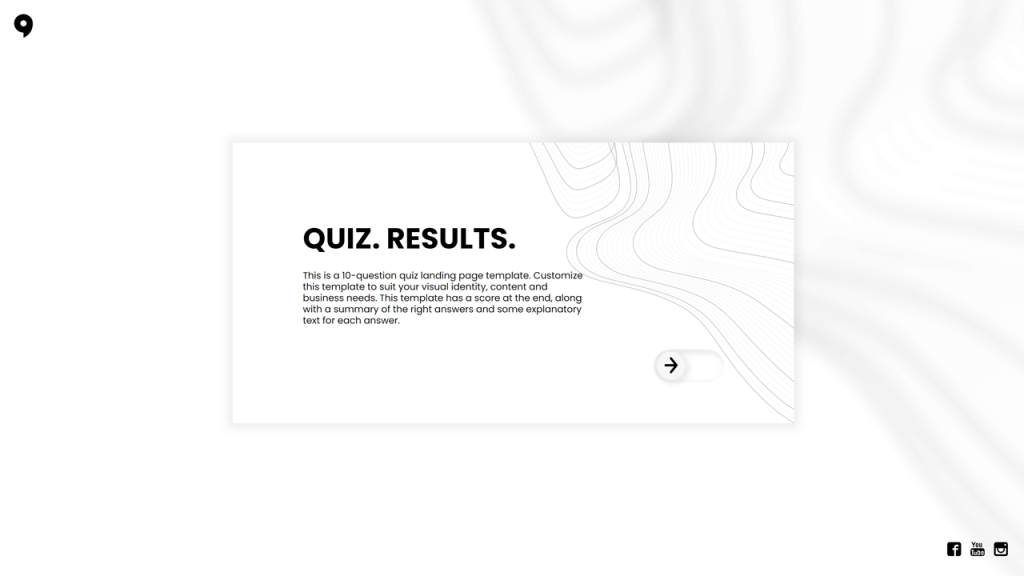
Skyrocket your lead generation with these gated content best practices!
If you use gated content correctly, you will get more qualified leads than ever before. Identify your target audience’s needs and preferences to achieve optimal results. Your sales team will be extremely grateful for the results!
Dot.vu is an Interactive Content platform that offers a large variety of Interactive Experiences that you can easily gate. With our editor, you have unlimited freedom in terms of functionality and interactivity. Create an experience that will engage your visitors and gate parts of your content to skyrocket your lead generation strategy like never before!
When you create a free account, you can try any of our templates for free. Start creating Interactive Content that converts, engages, and delivers results today!
